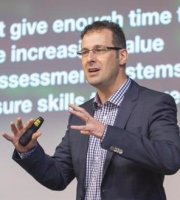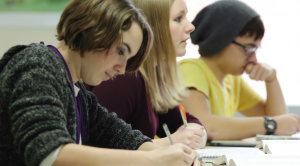My favourite definition of education is this:
“Education is a conversation between one generation and the next, about what is important” ~ Sir John Jones.
The quote does, however, invite the question – “What is important?”
At a secondary school recently, I asked that very question of staff, who discussed it in small groups, and together we make a list of what they thought was important. Here’s what was listed (in no particular order):
- Learning how to learn
- Creativity
- Resourcefulness
- Resilience / Willingness to risk failing
- Teamwork
- Communication and presentation skills
- Problem solving skills
- Independence
- Critical thinking skills
- Tolerance and understanding of others
- A growth mindset
- Research skills
- Digital citizenship
- Self-awareness / Self-assessment.
What interested me is that nobody mentioned “memorising important historic dates” or “knowing the first 20 elements of the periodic table”. Nobody even mentioned “learning times tables”. That’s not to say that those things are no longer useful, but that nobody mentioned them, shows me that teachers know, tacitly, that some things, while still useful, are now less valuable, and other things which have always been valuable are now even more so.

The threshold challenge for teachers in 2016, is how to spend more time teaching the things which, in our heart of hearts, we know have increasing value, while still preparing our students for assessment systems that primarily measure the things that have falling value. Do you see what I mean? If we spend all our class time teaching creativity, communication skills and resourcefulness – we are doing them a disservice if they face an exam testing their knowledge recall in a room where communication is banned and resourcefulness is called ‘cheating’.
The threshold challenge for teachers in 2016, is how to spend more time teaching the things which have increasing value, while still preparing our students for assessment systems that primarily measure the things that have falling value.
We have to do both, not either/or. That is one reason (of many) that the flipped learning model makes so much sense. It allows us to make sure we are covering the knowledge they will need for the exam, while freeing up significant class time for “…what is important”. Flipped learning is not an end in itself. It is a means to an end – which end is the freedom to teach the things that matter most, in engaging ways, whether or not they are assessed on an exam. (Until the yoke of exams is lifted off our shoulders).
If you are interested in flipping your class, or if you have already done so, but are looking for easier, cooler and more effective tools, workflows and strategies, I’ll be running a workshop in Melbourne on 19th February. You can find the information about that workshop here.
Or if you would like me to present to your staff on this, or any other topic related to the use of ICT in education, please don’t hesitate to contact me.


 On the heels of my
On the heels of my 



You must be logged in to post a comment.